Student-Created Project Shines Light on UH’s Rich History Over 100 Years
100 Years of Stories Initiative Brings Seminal UH Figures to Forefront through Articles, Videos and Exhibit
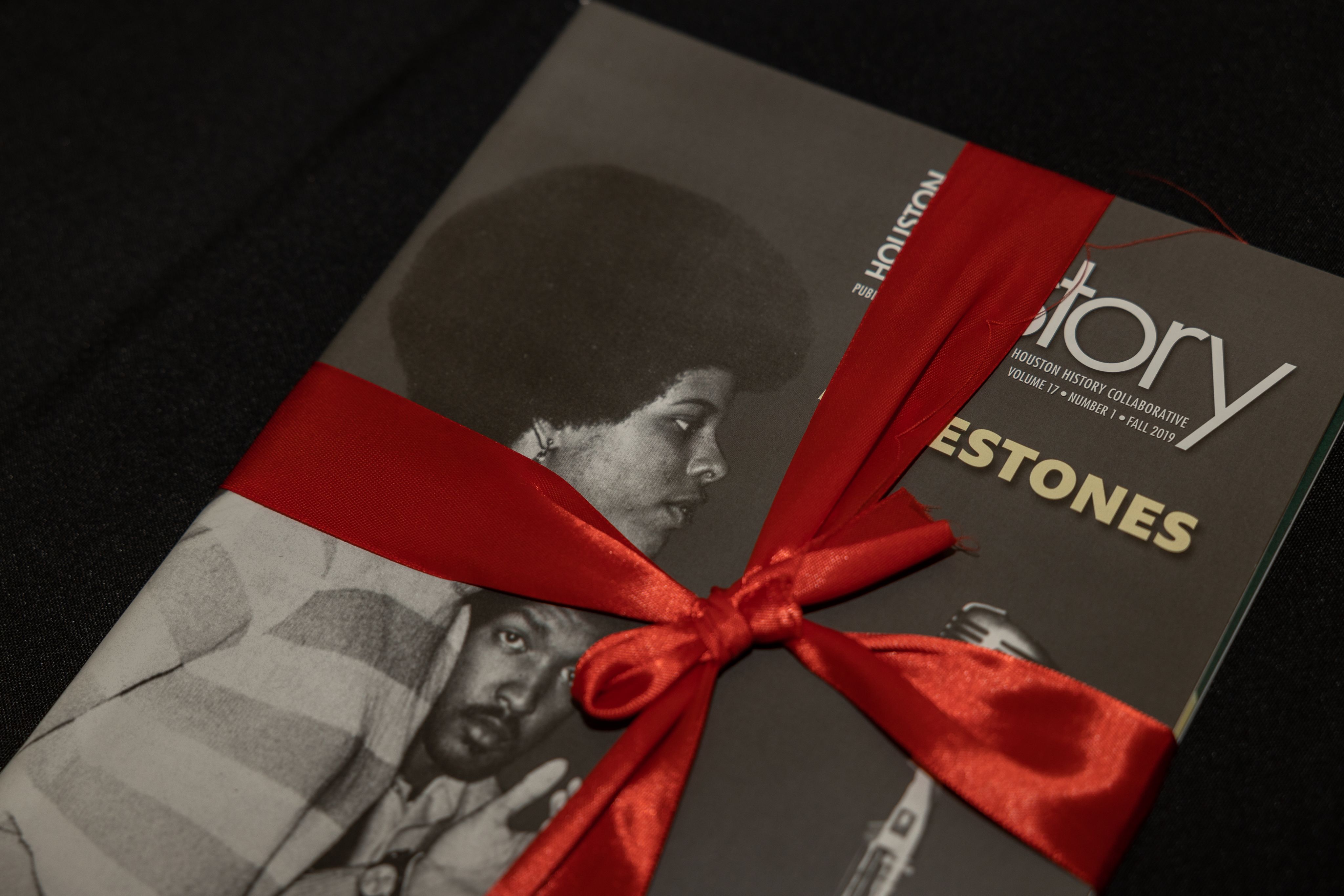
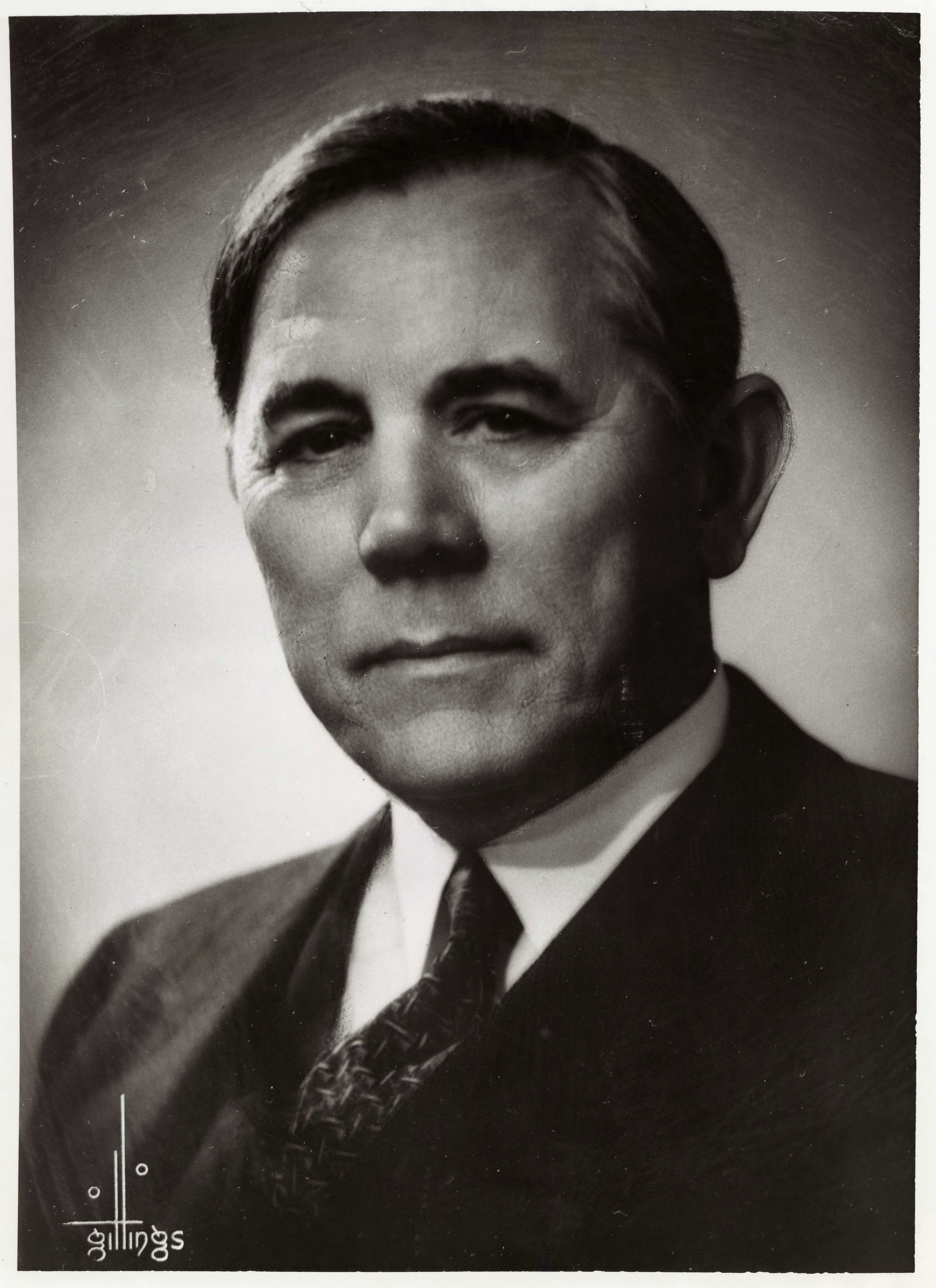
Hugh Roy Cullen
Hugh Roy Cullen
Hugh Roy Cullen, a crucial early benefactor to the University of Houston, once stated the University “must always be a college for working men and women and their sons and daughters. If it were to be another rich man’s college, (he) would not have been interested.” Cullen, a fifth-grade dropout and self-made millionaire oilman, made the stipulation upon agreeing to donate the funds needed to build UH’s first building and serve as university chairman in the mid-1930s.
Following its humble beginnings as Houston Junior College, offering night classes to students at San Jacinto High School, the J. J. Settegast Estate and Ben Taub donated 110 acres of land southeast of downtown in 1936 to give the University its own campus. On June 4, 1939, UH dedicated the Roy G. Cullen building, the first edifice on campus, and the rest, as they say, is history.
It is history that has been largely influenced by the trailblazing work of students creating change on campus. And now, UH’s impact on Houston and its culture is being showcased by current students through the project “100 Years of Stories: Documenting a Century at the University of Houston.” The initiative is a three-year collaboration between the Center for Public History, UH Libraries and Houston Public Media that produced historical articles, oral histories, radio and television content and an exhibit about notable narratives at the University.
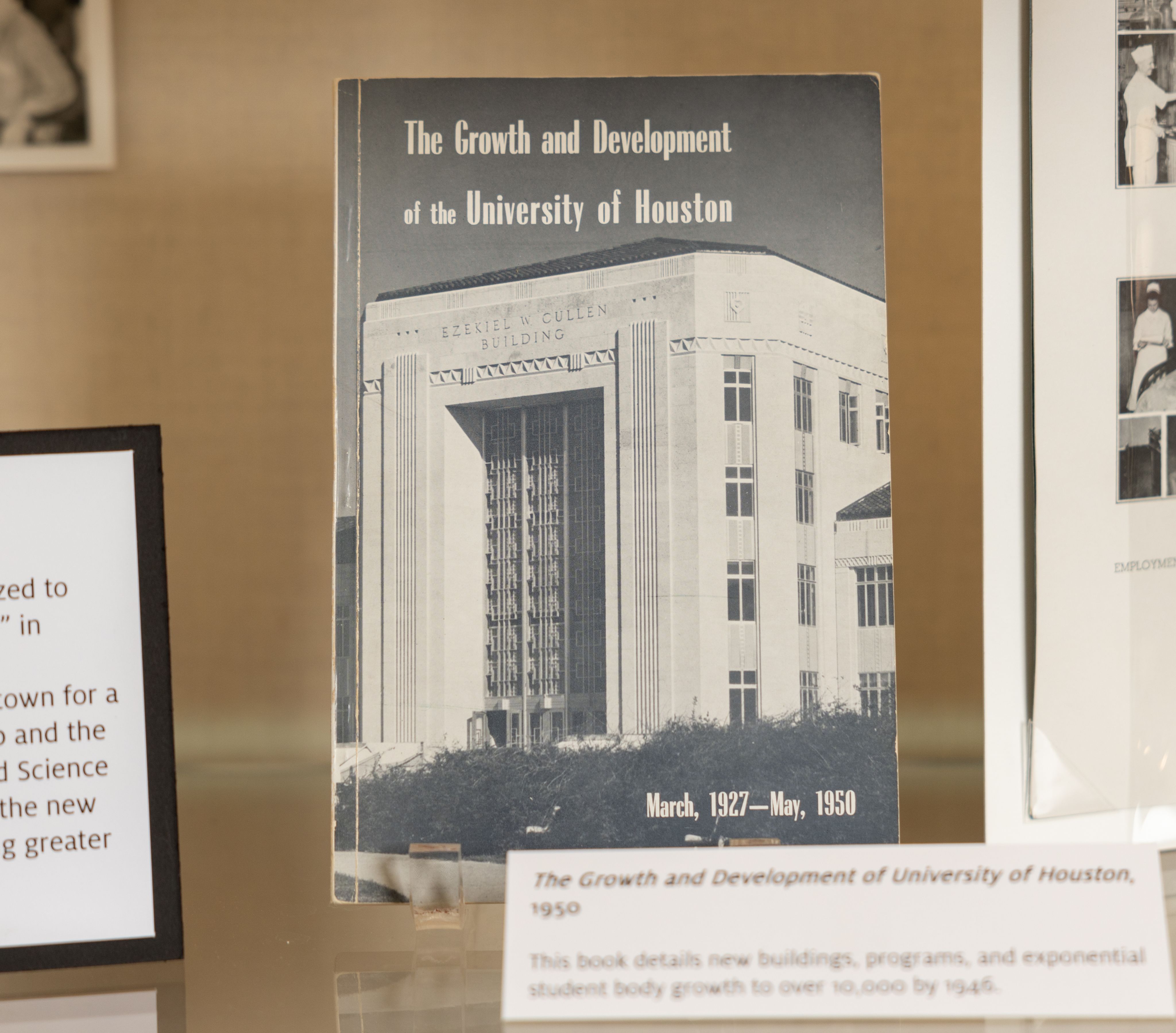
The exhibit is located on the second floor of the MD Anderson Library near Special Collections.
The exhibit is located on the second floor of the MD Anderson Library near Special Collections.
“Since its founding in 1927, the University of Houston has been a partner with the city of Houston, championing the regional hallmarks of inclusion and diversity, innovation and health expertise,” said Debbie Harwell, editor of Houston History magazine and instructional assistant professor of history. “The period leading up to the University's 2027 centennial provides an opportunity to research and recount the interconnected histories of Houston and UH.”
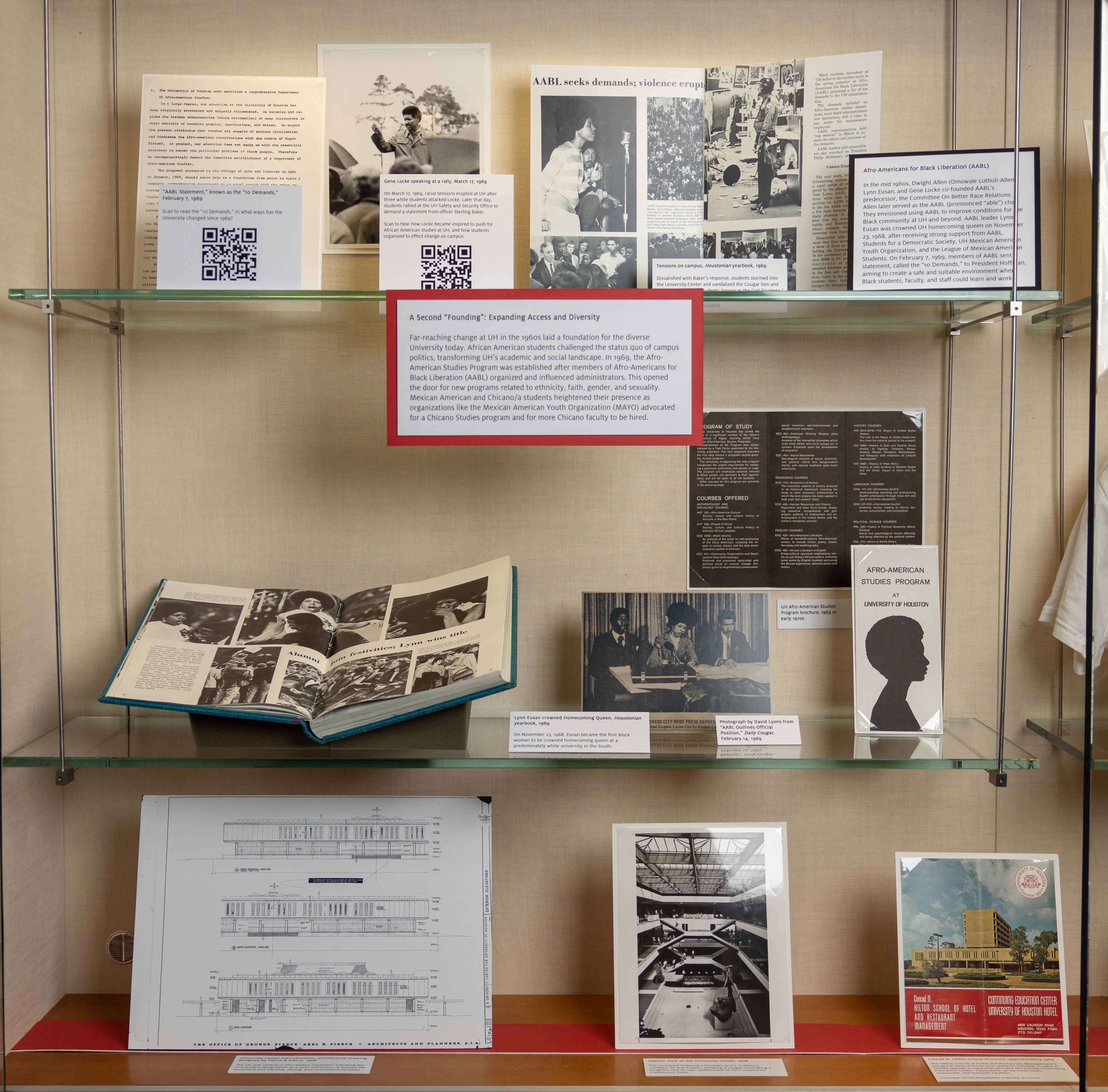
“Agents of Change: Celebrating Innovation at the UH Centennial” exhibit
“Agents of Change: Celebrating Innovation at the UH Centennial” exhibit
“Since its founding in 1927, the University of Houston has been a partner with the city of Houston, championing the regional hallmarks of inclusion and diversity, innovation and health expertise.”
- Debbie Harwell
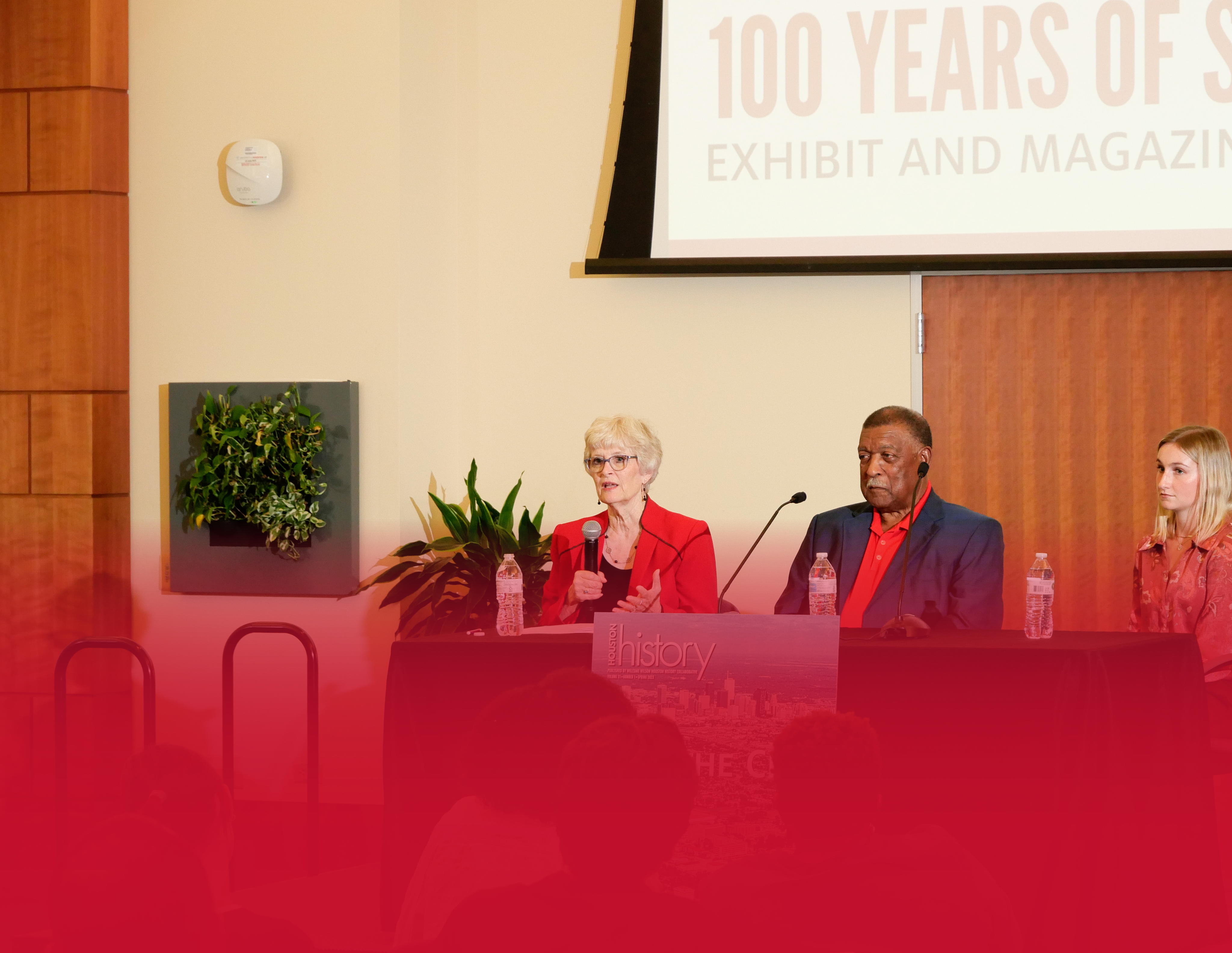
As the Houston economy shifted to support the war effort during the 1940s, the University of Houston rose to the challenge by hosting naval and civilian pilot training, along with creating a radio school. Following the passage of the G.I. Bill, droves of young veterans came to the University seeking education, and UH welcomed them by providing housing and expanding its class offerings morning to night, six days a week. In turn, those veterans-turned-students pushed for an intercollegiate athletics program, an example of how students created change on campus.
History major Megan Dagnall researched the history of diversity at the University. Beginning in the 1950s, city institutions, like HISD, delayed integration despite U.S. Supreme Court rulings, and pushback was encountered throughout the city, including the University of Houston. In the summer of 1962, UH was integrated under President Philip G. Hoffman.
For Dagnall’s Houston History magazine article on Hoffman, she conducted oral histories with two people who were students during integration.
“What I found is they had no idea UH was being desegregated because it wasn’t talked about. I thought it was interesting that the only time they paid attention to desegregation was when the football team was integrated.”
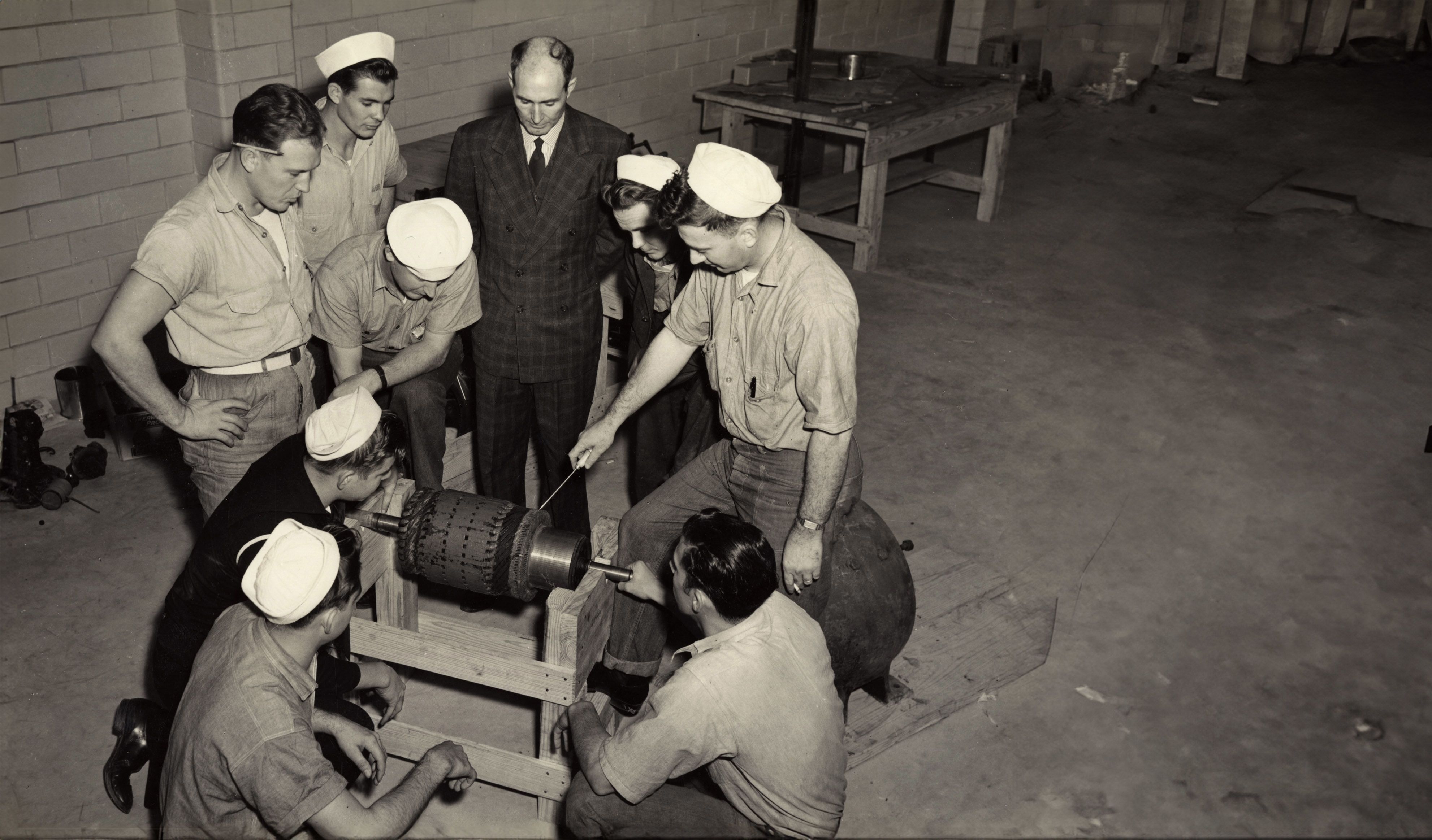
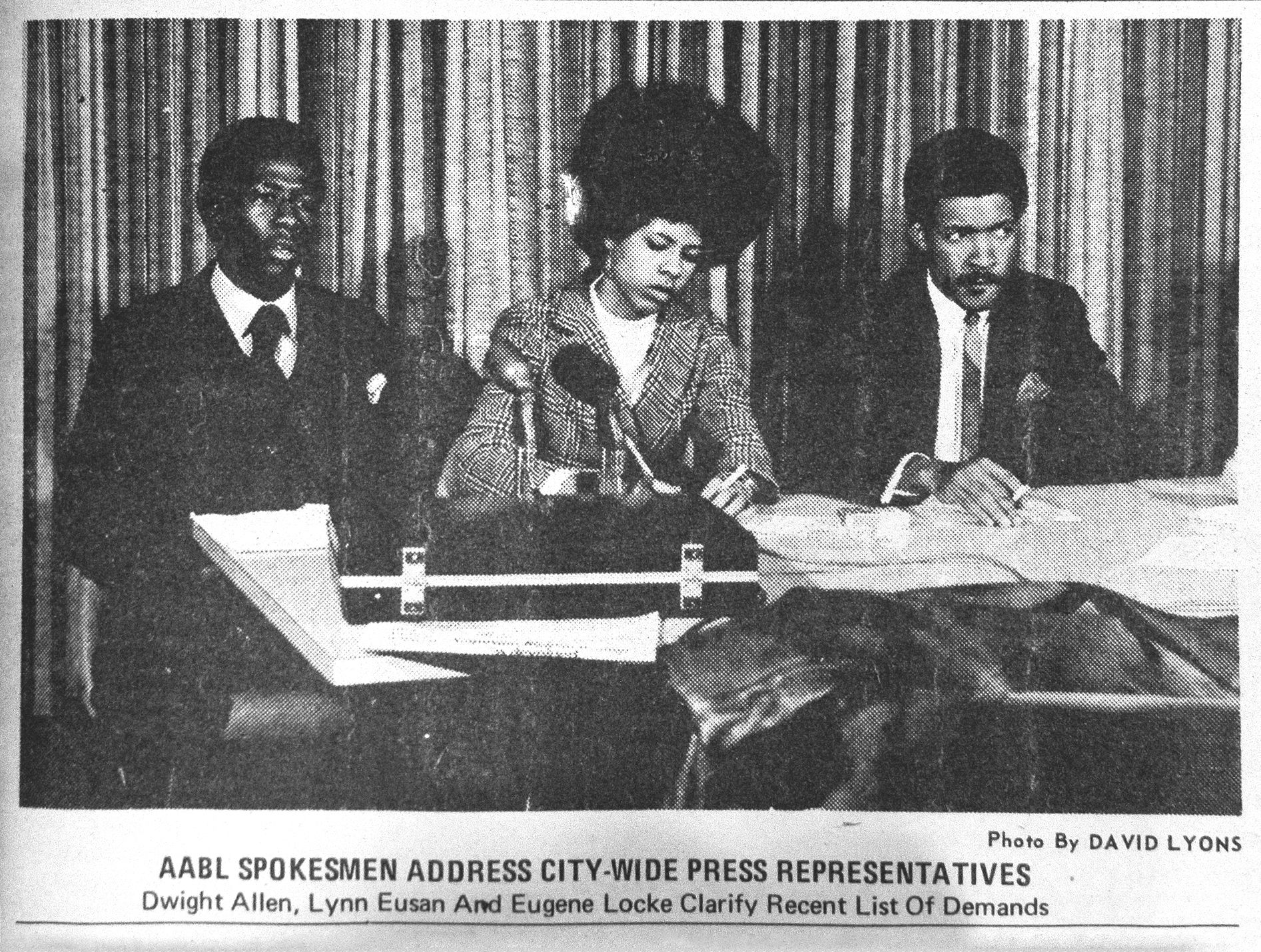
AABL leaders Dwight Allen (Omowale Luthuli-Allen), Lynn Eusan and Gene Locke.
AABL leaders Dwight Allen (Omowale Luthuli-Allen), Lynn Eusan and Gene Locke.
Public history master's student Cady Hammer learned that in 1969, the student group Afro-Americans for Black Liberation presented a list of demands to UH administrators expressing their frustrations. Later that year, the Afro-American Studies Program was established, the first at a Texas public university.
“The most surprising thing for me about this transition period was how much change at the University was student-driven,” Hammer said. “The University was founded by young adults who wanted to further their education while working full-time jobs but also wanted to participate in extracurricular activities. Throughout UH’s history, all of the major movements were driven by young adults.”
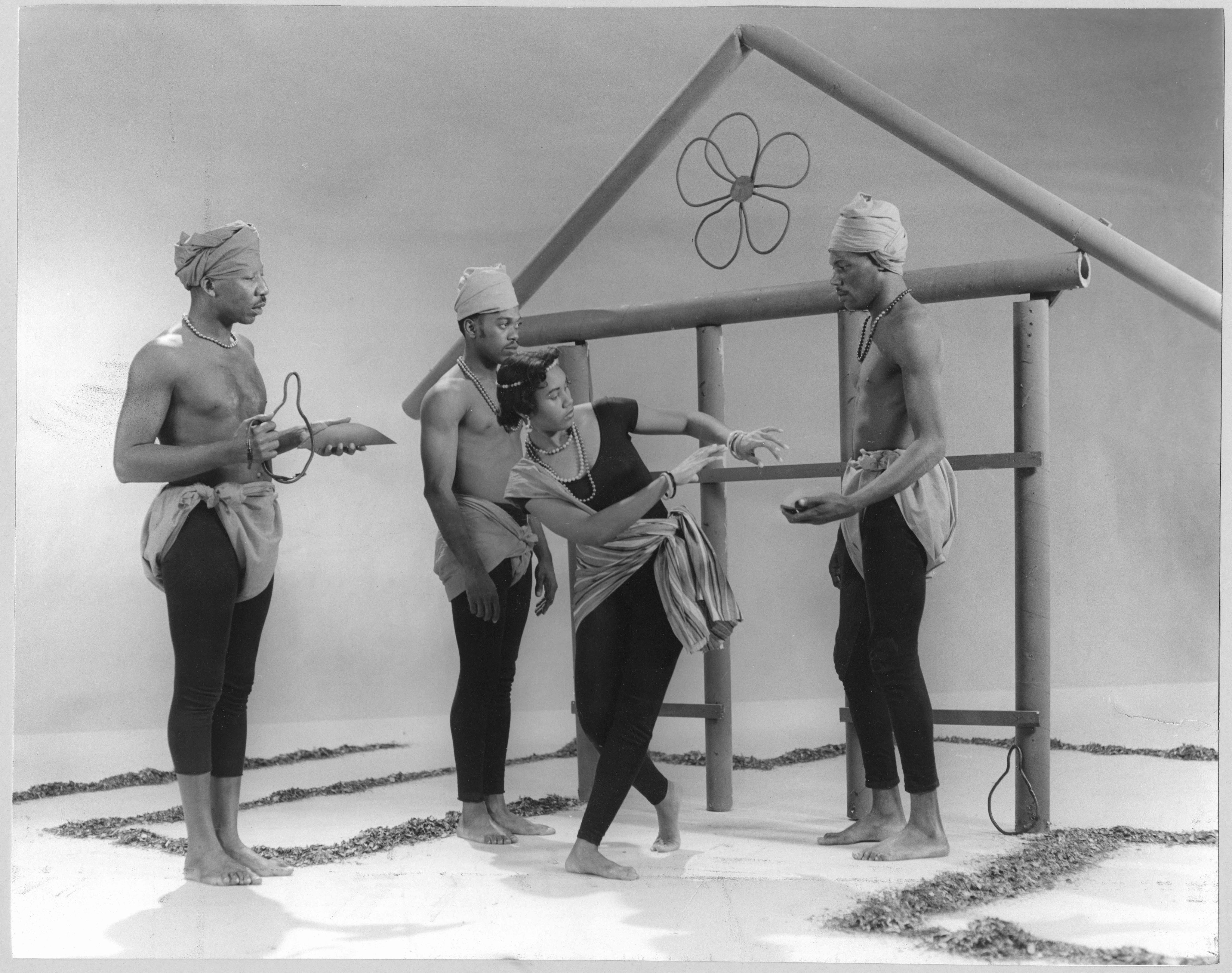
KUHT-TV program, ‘People Are Taught to Be Different,’ portrayed sociological stories about life events
KUHT-TV program, ‘People Are Taught to Be Different,’ portrayed sociological stories about life events
Hammer helped create the overarching narrative for the 100 Years of Stories exhibit, “Agents of Change: Celebrating Innovation at the UH Centennial,” at the MD Anderson Library. She worked on the exhibit outline in former Center for Public History director Monica Perales’ class in the fall of 2022; the following semester, a different class, which included graduate student Alec Story, chose what specific items to include in the exhibit.
“I’ve had a lot of experience in museums and galleries, but I’ve never done something as extensive with the university, especially in a university gallery setting,” Story said. “I learned how to work with archival materials.
"Throughout UH’s history, all of the major movements were driven by young adults.”
- Cady Hammer
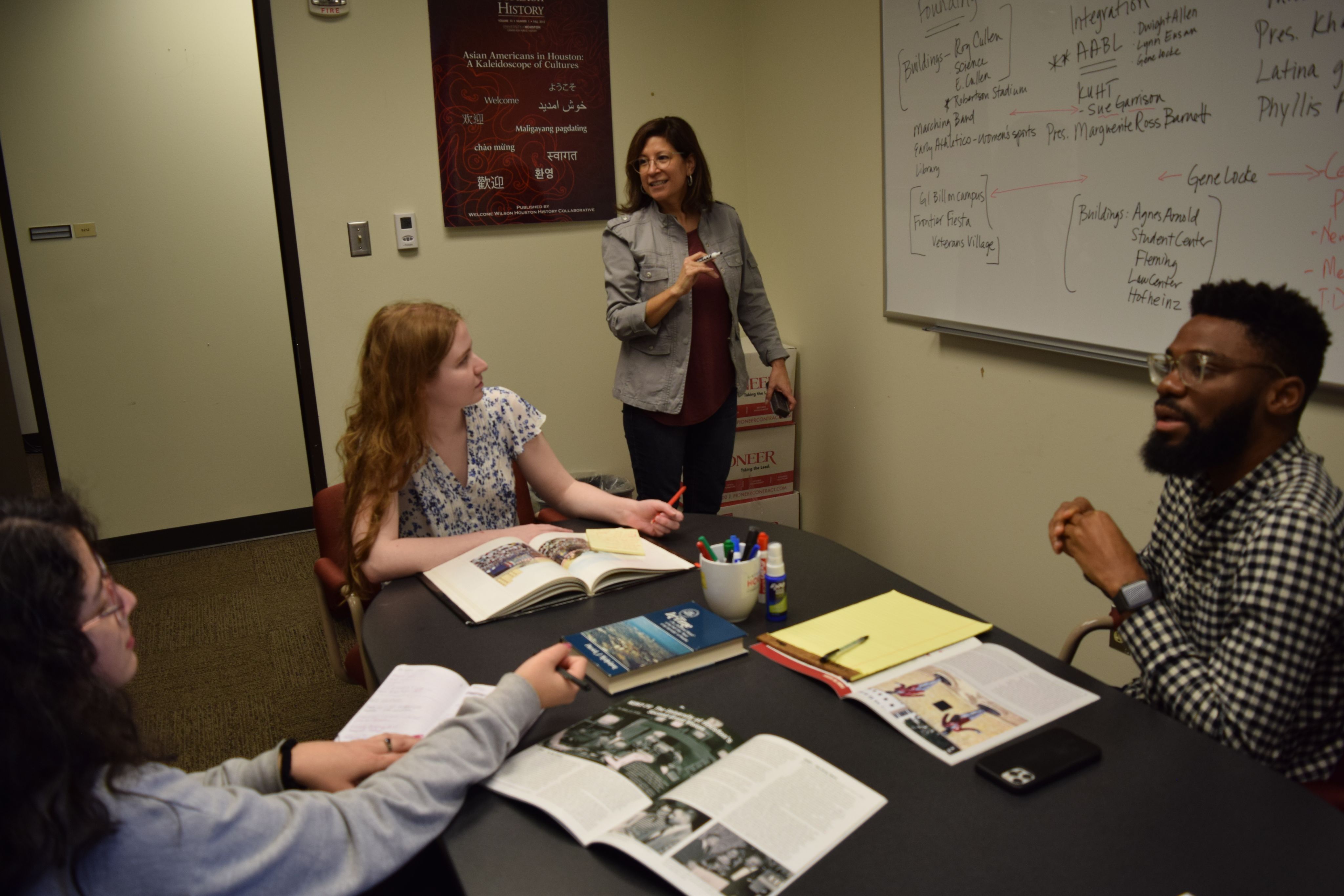
The exhibit focuses on events and people that were featured in Houston Public Media’s video series “100 Years of Houston,” such as the innovative proposal by former UH president Walter Kemmerer in 1951 to create an educational television station. KUHT-TV went on the air in 1953 from the University of Houston campus, the nation’s first public broadcasting TV station. It broadcasted lectures, films and other educational programs. Long before the Covid-19 pandemic, KUHT established the basis of distance learning in higher education, with biology and psychology credit courses offered on TV.
KUHT became Houston Public Media in 2014 when it joined forces with KUHF-FM, the radio station where UH engineering professor John Lienhard launched his radio program, Engines of Our Ingenuity in 1988. The show spotlights stories of how human hands have created the technological marvels of our time. History major Cameron Thompson captured Lienhard’s love of learning and inspiration for the program by conducting an oral history with the radio program host for Thompson’s article in Houston History magazine.
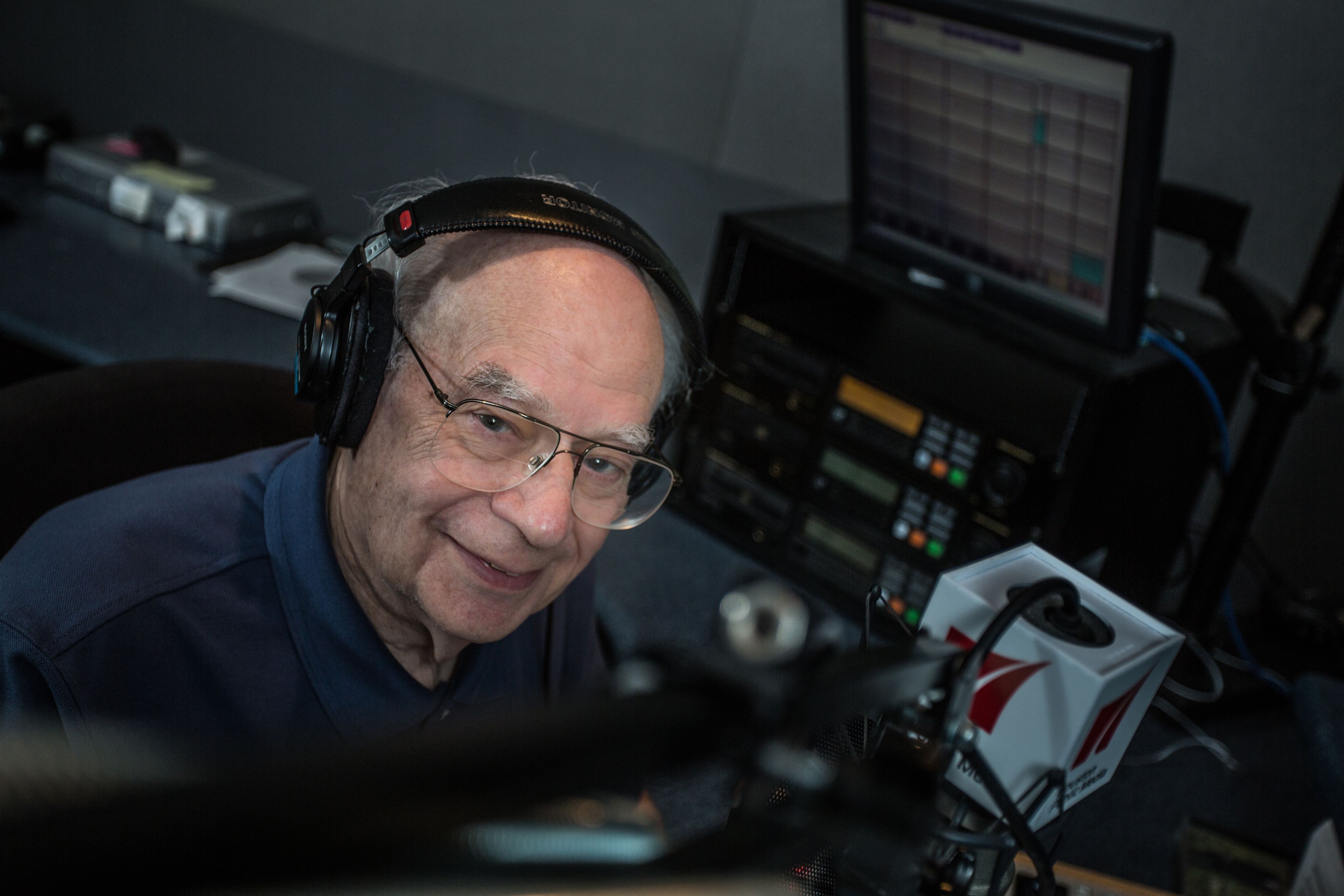
M.D. Anderson Professor of Technology and Culture and Professor Emeritus John Lienhard
M.D. Anderson Professor of Technology and Culture and Professor Emeritus John Lienhard
“Professor John Lienhard is one of the most interesting people I’ve ever spoken with,” Thompson said. “He is a living encyclopedia. His work on the Engines of Our Ingenuity program is close to 3,300 episodes. He was the lead on 75% of them. He knows so much about basically anything.”
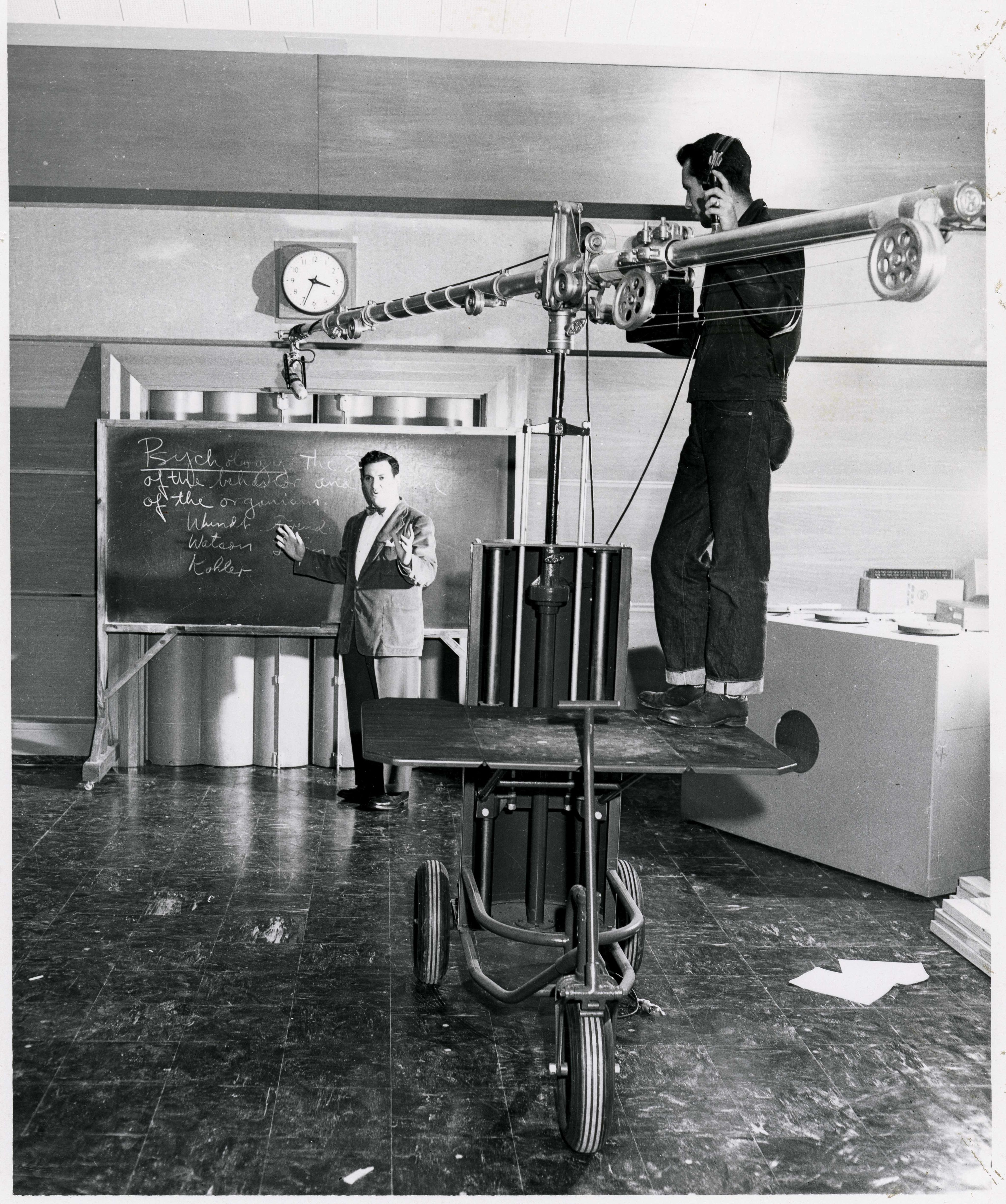
Professor Richard I. Evans teaching Psychology 231 telecourse, approximately 1953
Professor Richard I. Evans teaching Psychology 231 telecourse, approximately 1953
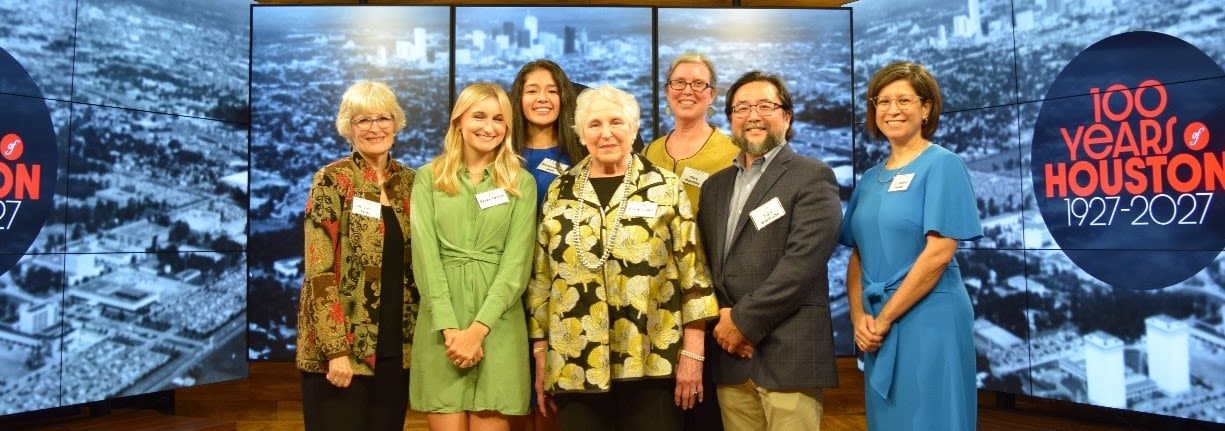
Carey C. Shuart (middle)
Carey C. Shuart (middle)
Thompson credits the staff on UH Libraries’ Special Collections team for aiding him in finding archival material. “They're some of the best people on campus. I don't think the history department could function without them, because when we need to find primary sources, they’re the first people we go to. Their behind-the-scenes work is a critical part of the 100 Years project.”
In turn, Mary Manning, university archivist with UH Libraries, said she is proud of helping the students create a product that is based on their research and is tangible work they can point to on their resumes.
The project is made possible through support from Carey C. Shuart, a native Houstonian who dedicates her time and resources to benefit art, education and women’s causes throughout the region. Shuart said through supporting the University’s programming for about 20 years, she’s come to learn all the ways in which UH contributes to the city and vice versa. To share this little-known fact, she supports a variety of research on campus – including 100 Years of Stories.
“The whole approach of the project was interesting to me because I grew up in Houston, yet I didn’t know a great deal about the University,” Shuart said. “I wanted more people to learn about the University and how it was contributing to the community."
The University of Houston’s dedication to the community continues to present day under the leadership of UH president Renu Khator and her resolve to turn UH into a top 50 public university to serve the working class of Houston, a mission that harks back to UH’s founding. Moving toward its centennial, the University has established the Tilman J. Fertitta Family College of Medicine, Houston’s first medical school in nearly 50 years, and improved its six-year graduation rate by 16% since 2013. Most recently, the university moved 21 spots to No. 70 in U.S. News & World Report’s ranking of top U.S. public universities. As Khator puts it, “our students deserve the best education, and our city and state deserve a top-notch public university.”
While centennial celebrations await, the University has not lost its north star, aptly stated by student Alec Story: “While a lot of universities have this reputation of being for the elite and being for the privileged, UH was created for real people when they needed it most. Houston didn’t have that prior to the University of Houston.”
To view the 100 Years of Stories “Agents of Change” exhibit, visit the second floor of the MD Anderson Library near the Special Collections suite. It will be on display until May 31, 2024. To read past issues of Houston History magazine and to subscribe, visit the magazine’s website.
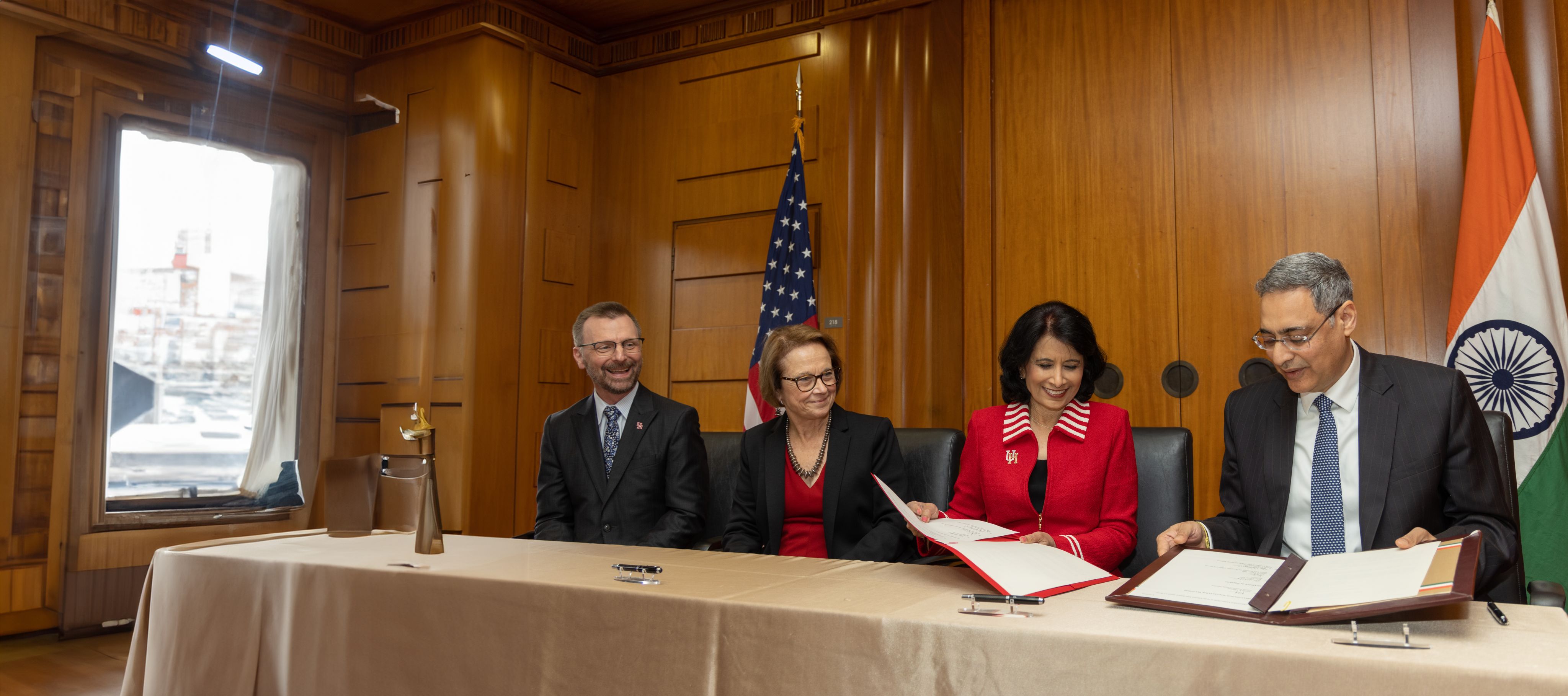
View more of the 100 Years of Stories project:
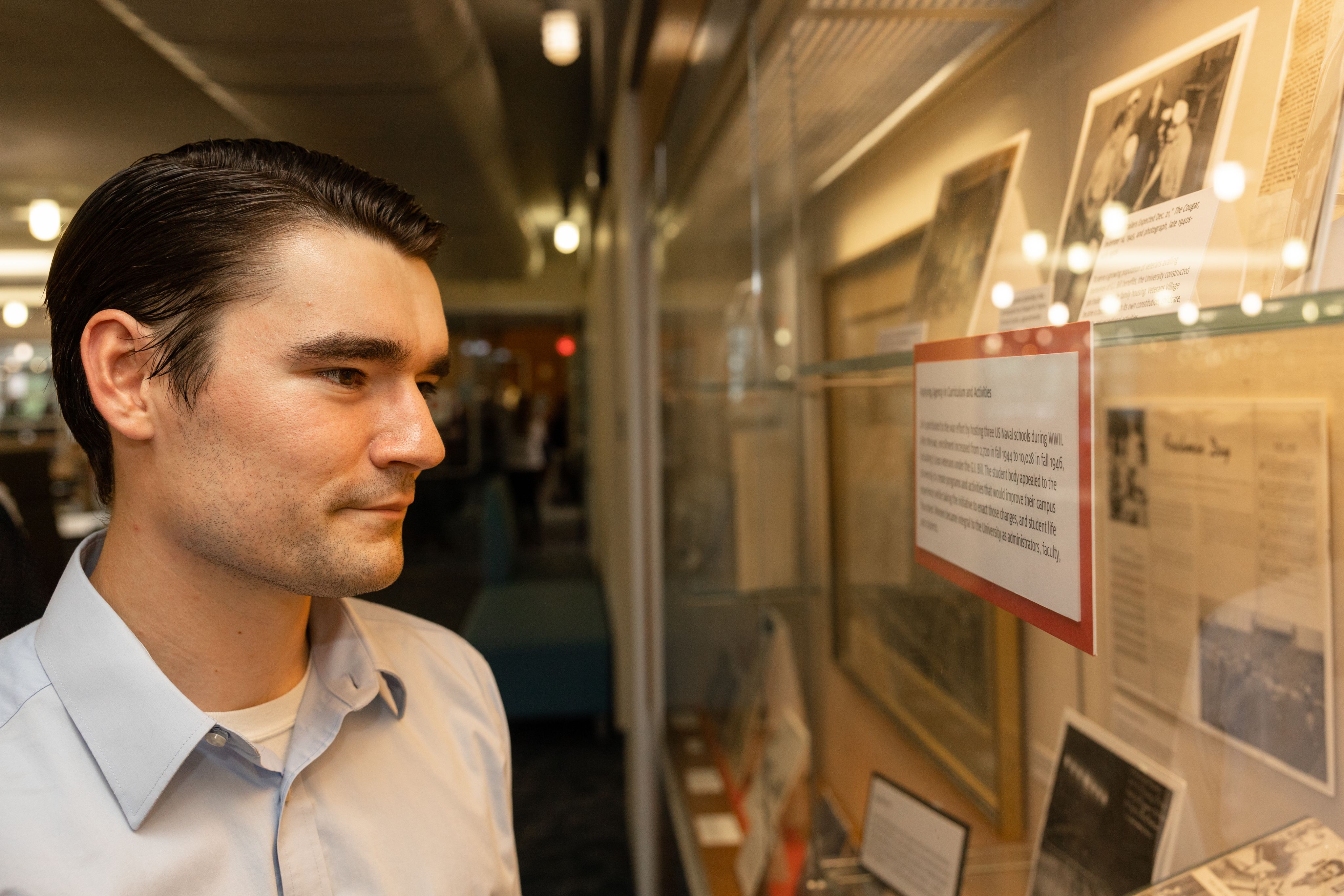
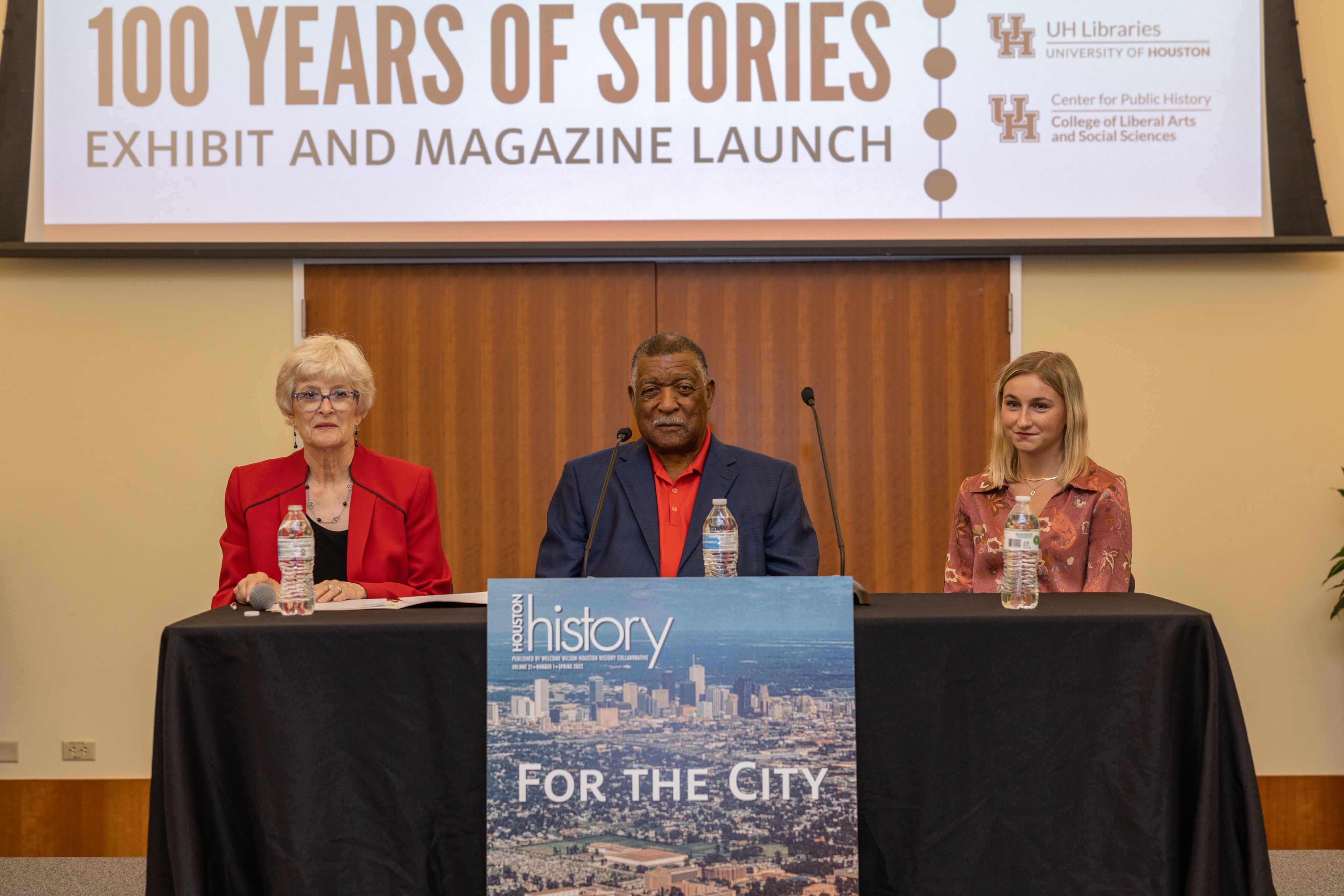
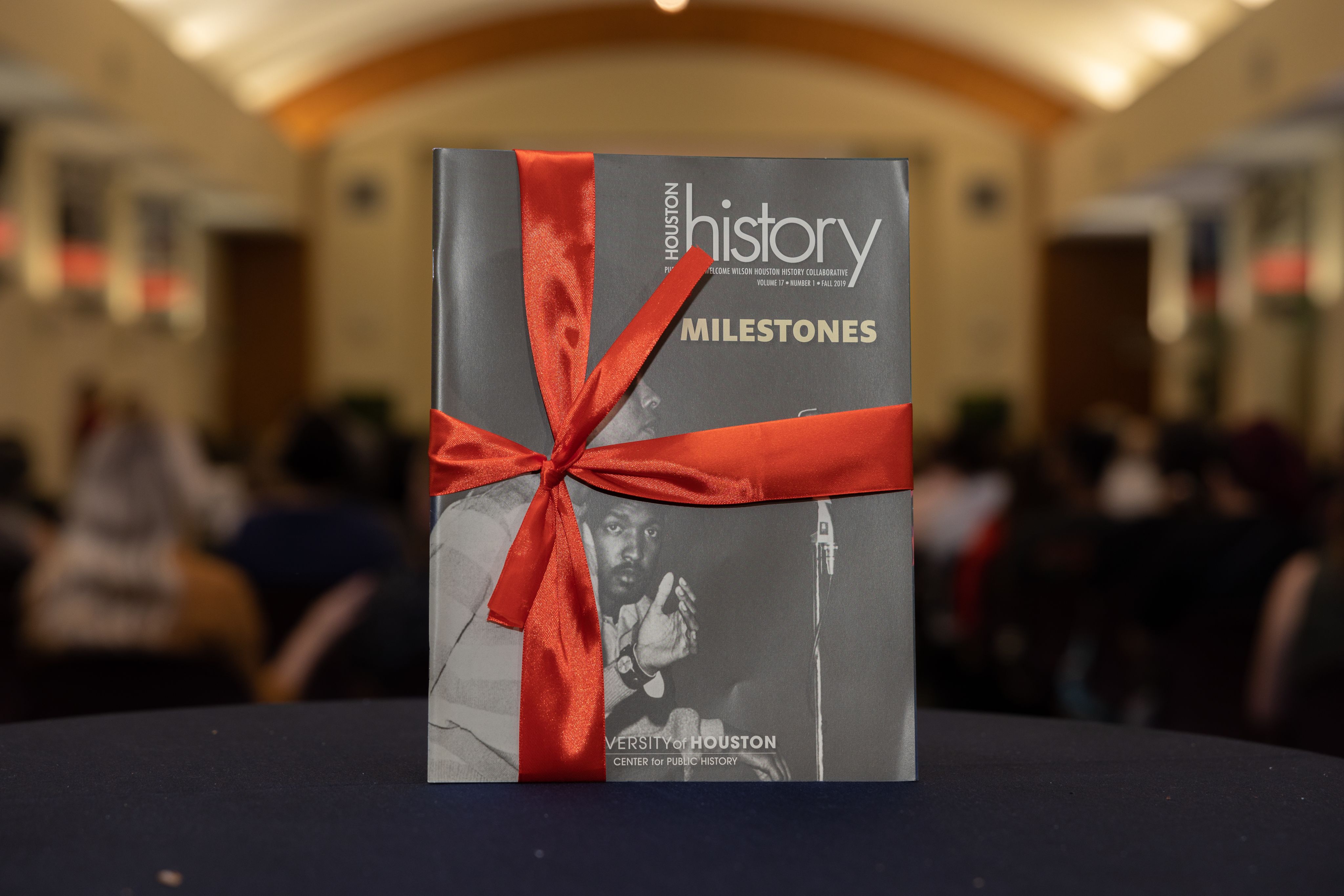
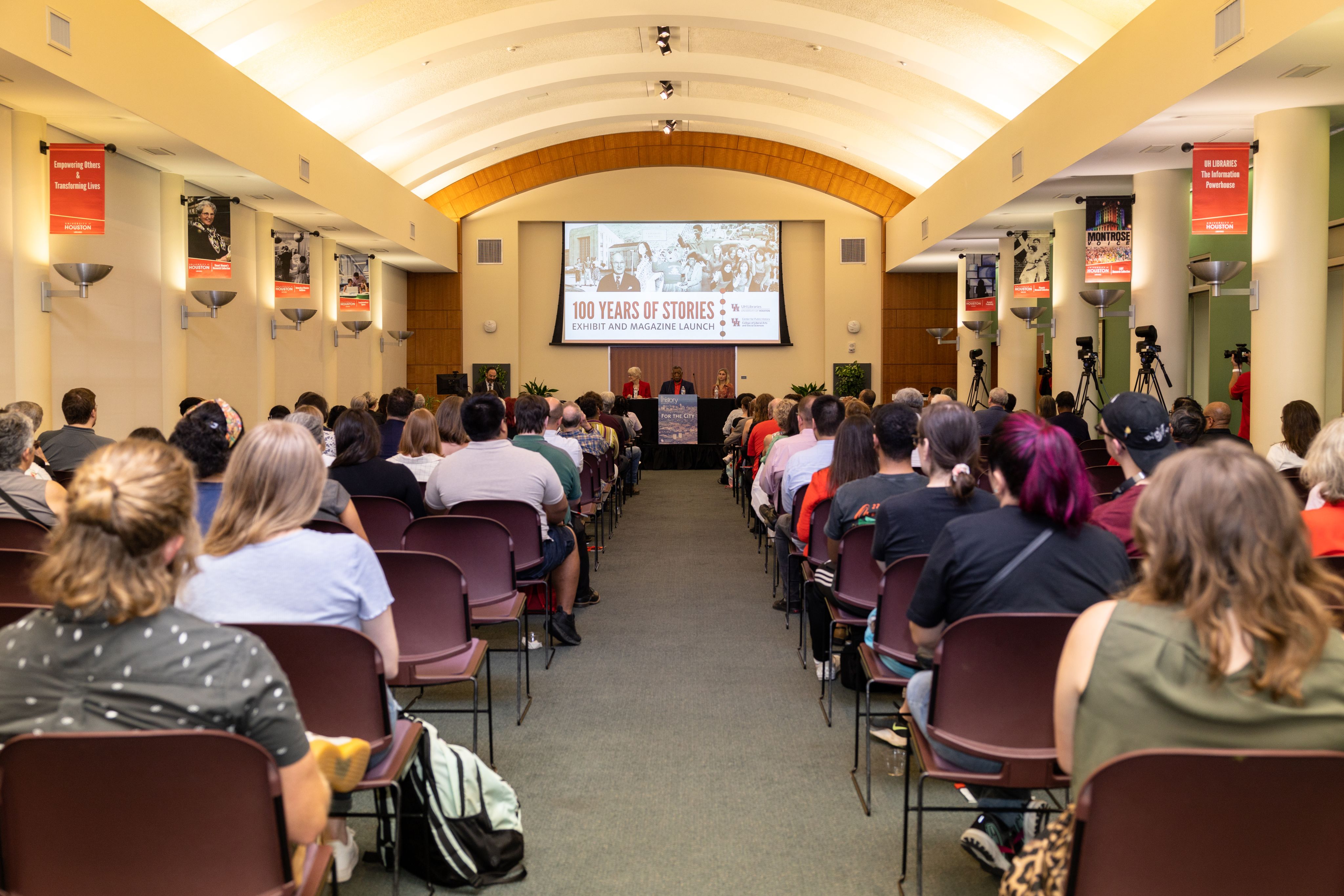
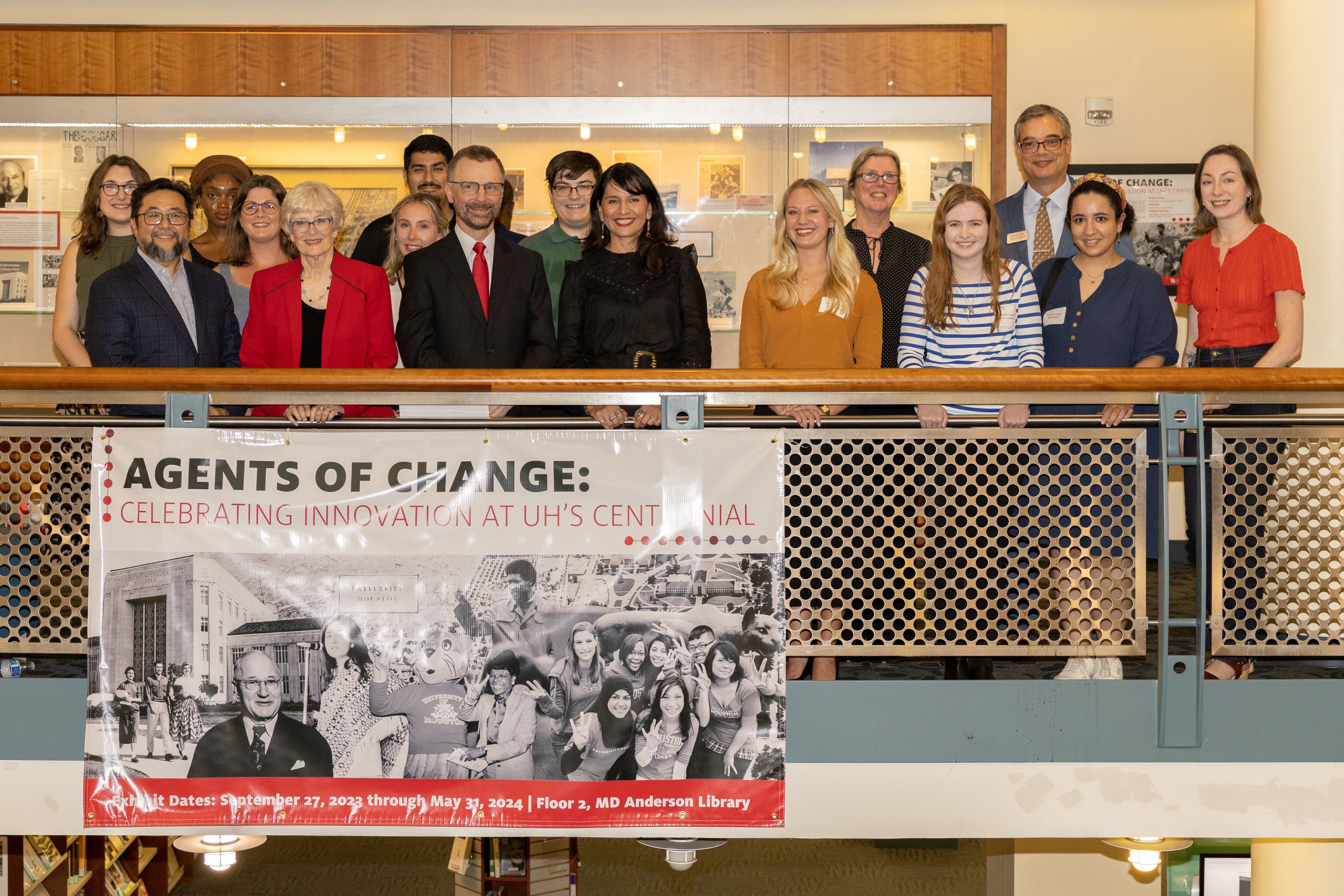
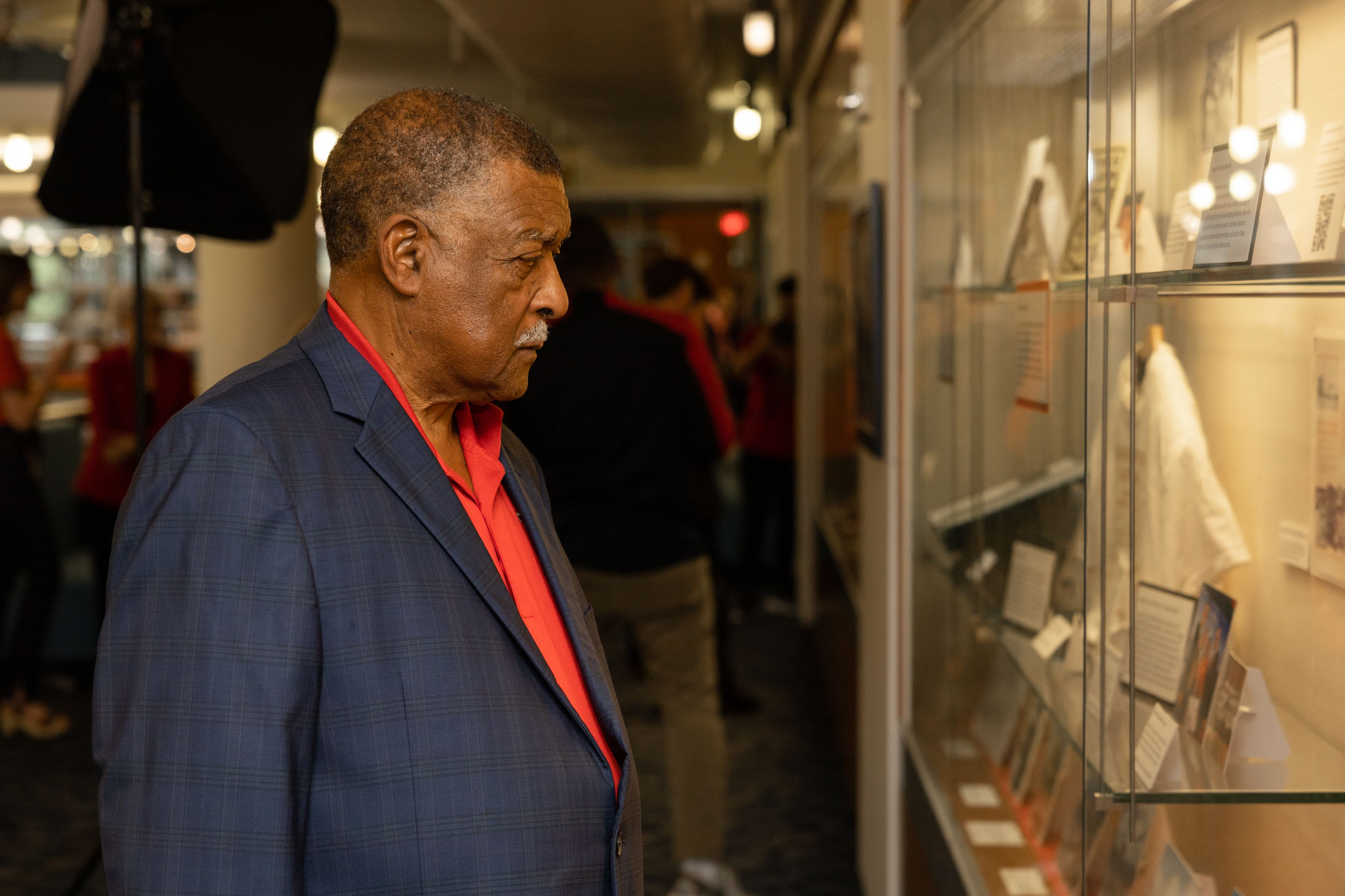
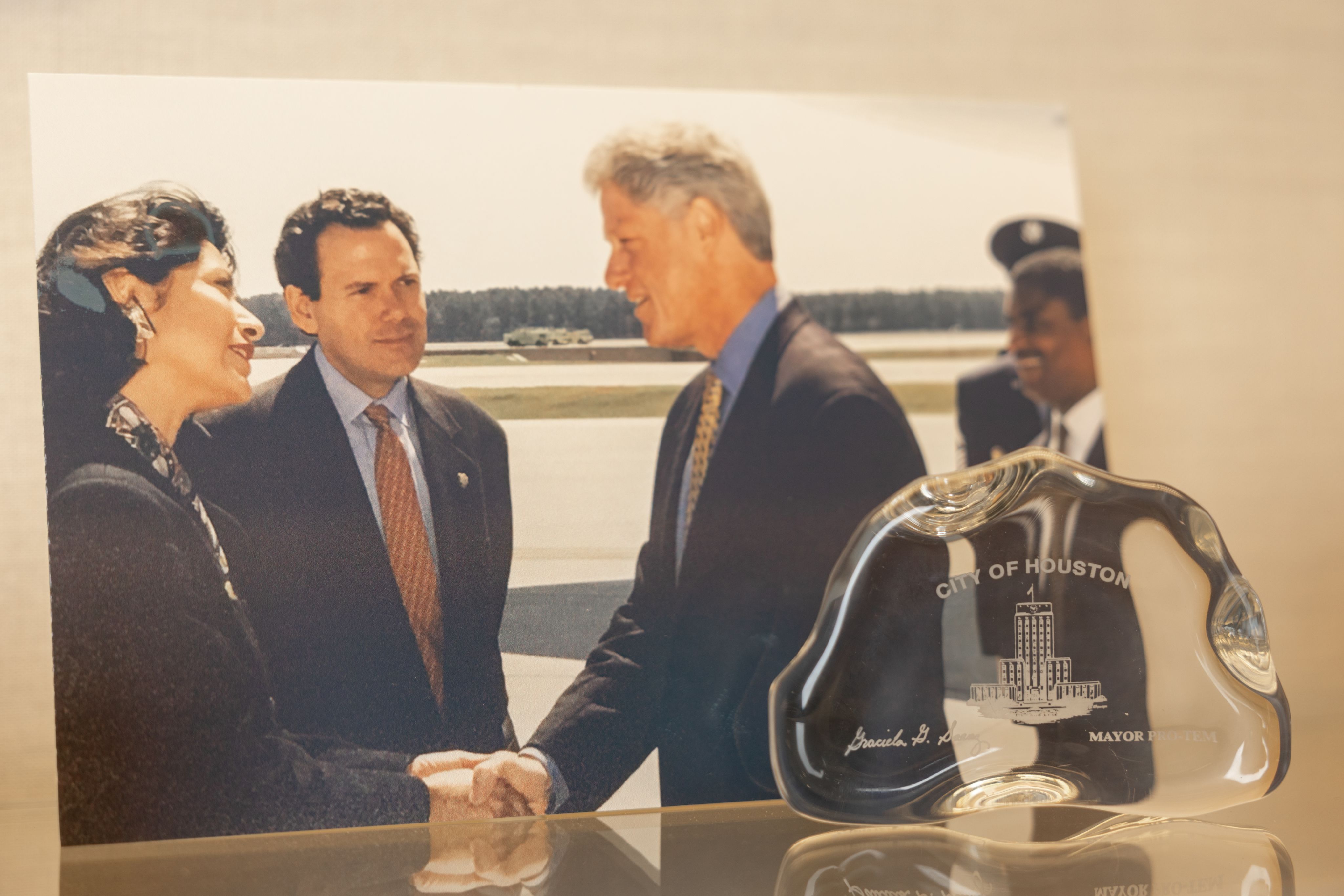
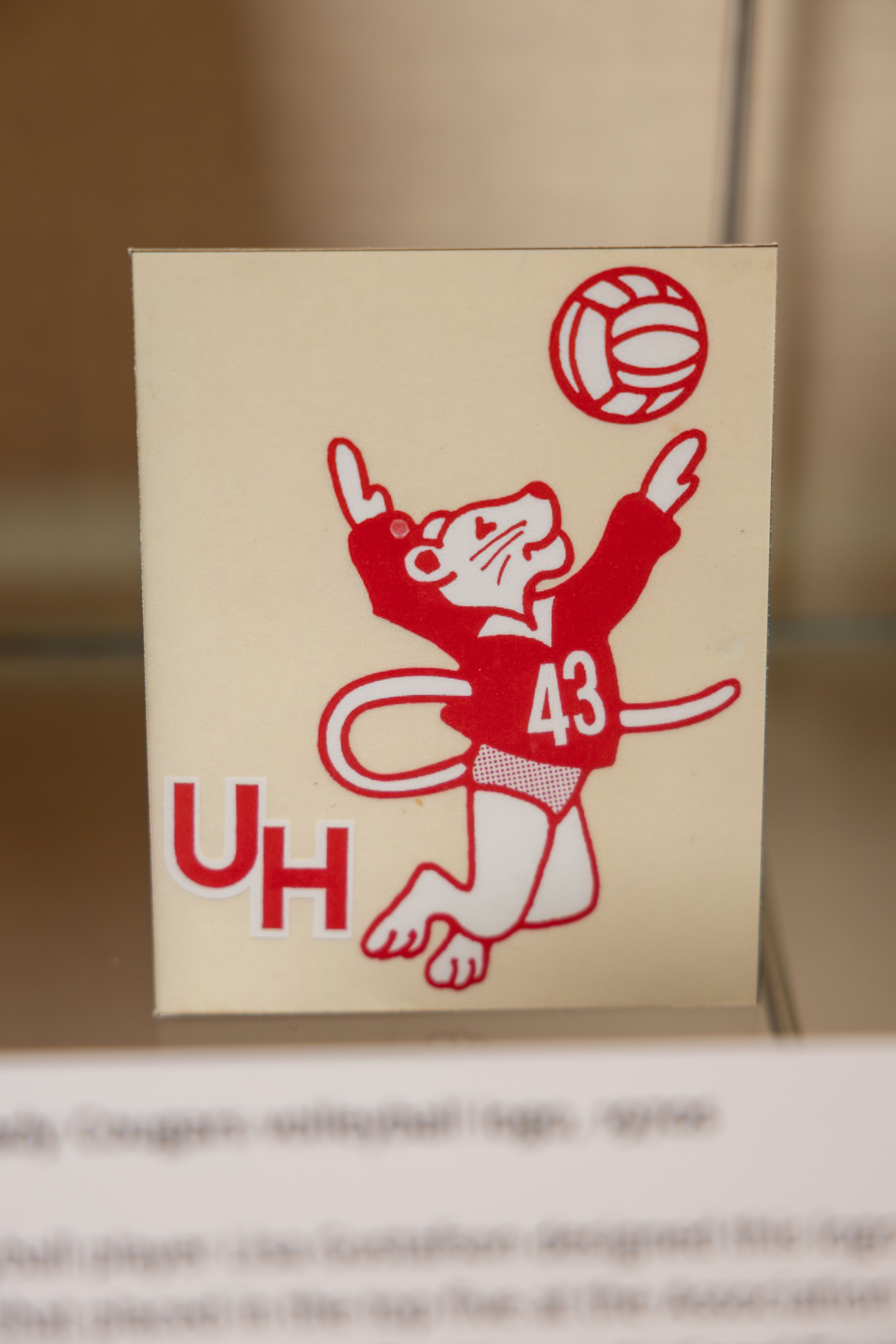
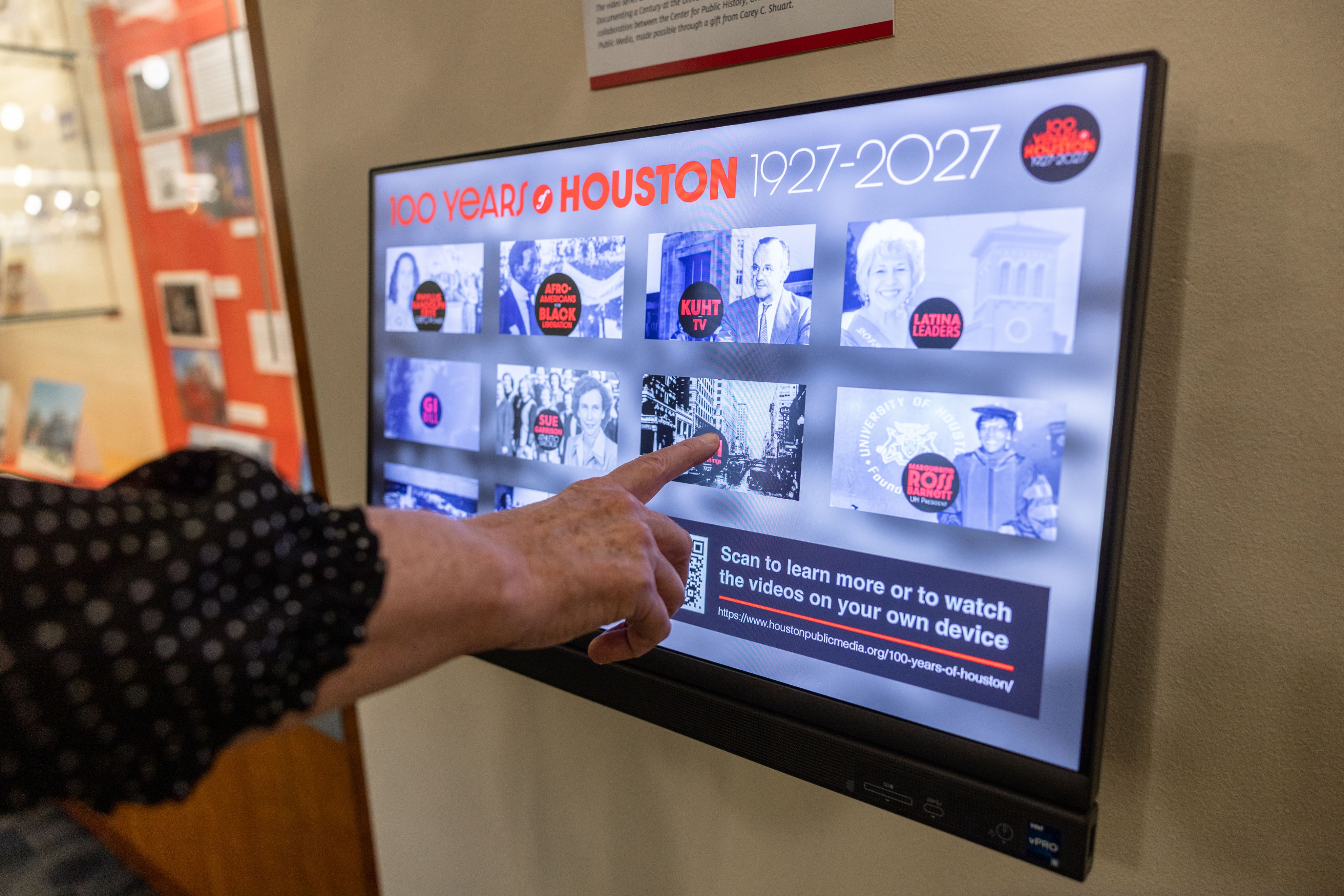

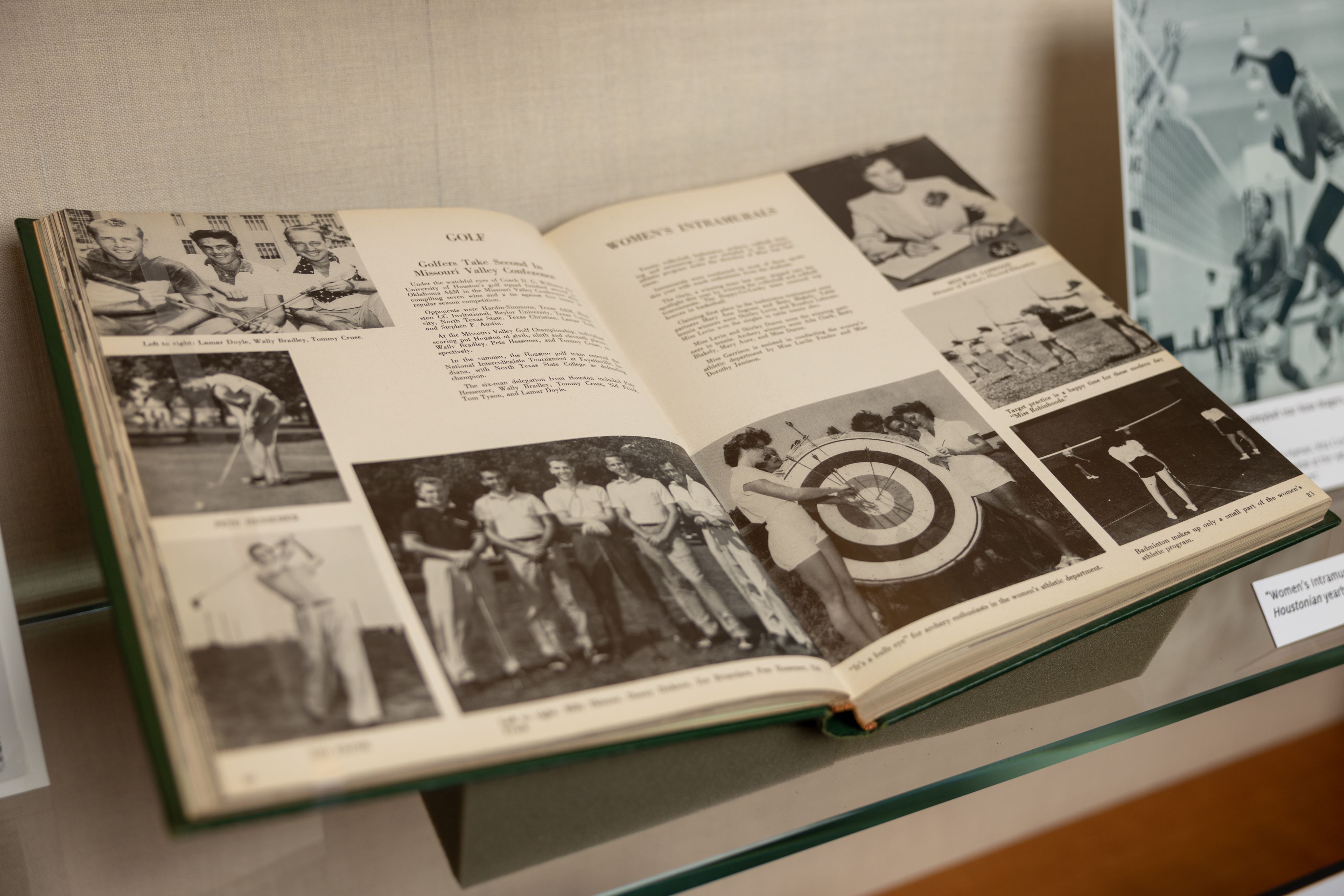

Attendee of “Agents of Change” event on Wednesday, Sept. 27, 2023 at the MD Anderson Library
Attendee of “Agents of Change” event on Wednesday, Sept. 27, 2023 at the MD Anderson Library

Left to right, Debbie Harwell, Gene Locke, Grace Conroy
Left to right, Debbie Harwell, Gene Locke, Grace Conroy

Fall 2023 edition of Houston History magazine
Fall 2023 edition of Houston History magazine

“Agents of Change” event at the Elizabeth D. Rockwell Pavilion at the MD Anderson Library.
“Agents of Change” event at the Elizabeth D. Rockwell Pavilion at the MD Anderson Library.

100 Years of Stories team
100 Years of Stories team

Gene Locke, a prominent leader in the AABL student group at UH, and former Harris County commissioner.
Gene Locke, a prominent leader in the AABL student group at UH, and former Harris County commissioner.

Graciela “Gracie” Saenz (’78, J.D. ’86), the first Latina mayor pro-tem of Houston, meeting former president Bill Clinton
Graciela “Gracie” Saenz (’78, J.D. ’86), the first Latina mayor pro-tem of Houston, meeting former president Bill Clinton

Former UH volleyball logo
Former UH volleyball logo

Houston Public Media's "100 Years of Houston" series
Houston Public Media's "100 Years of Houston" series

E.E. Oberholtzer, first president of UH, in the background
E.E. Oberholtzer, first president of UH, in the background

Houstonian yearbook
Houstonian yearbook
